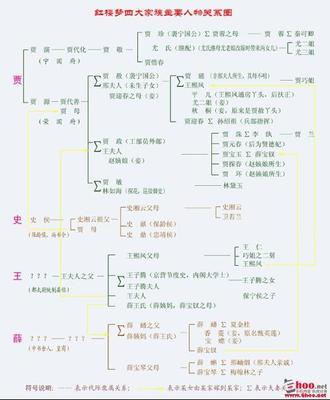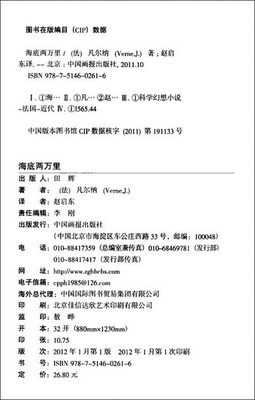《呼啸山庄》是英国女作家勃朗特姐妹之一艾米莉·勃朗特的作品,是19世纪英国文学的代表作之一。小说描写吉卜赛弃儿希斯克利夫被山庄老主人收养后,因受辱和恋爱不遂.外出致富。回来后对与其女友凯瑟琳结婚的地主林顿及其子女进行报复的故事。全篇充满强烈的反压迫、争幸福的斗争精神,又始终笼罩着离奇、紧张的浪漫气氛。此作品多次被改编成电影作品。
下面是小编为大家精心准备的:《呼啸山庄》人物关系结构相关论文。仅供大家参考!
《呼啸山庄》人物关系结构全文如下:Title:Catherine's dilemma between love and marriage in Wuthering Heights——The Psychoanalysis of love triangle relationship with Freud’s theory of personality

Abstract:
Wuthering Heights tells a story of superhuman love and revenge enacted on the English moors. In this thesis, an attempt is made to analyze the love triangle relationship which leads to Catherine's dilemma between love and marriage in Wuthering Heights by virtue of Freud’s theory of personality.
Key words:Wuthering Heights Freud’s theory of personality love triangle relationship
In Catherine's heart she knows what is right, but chooses what is wrong. It is her wrong decision that pushes her into the inextricable [LunWenJia.Com]dilemma between her love and marriage; it is her wrong choice that plunges the two families into chaos. In the mind, she is truly out of her way.
According to Sigmund Freud(1856—1939), the structure of the mind or personality consists three portions: the id, the ego, and the superego.“The id, which is the reservoir of biological impulses, constitutes the entire personality of the infant at birth. Its principle of operation, to guard the person from painful tension, is termed the pleasure principle. Inevitable frustrations of the id, together with what the child learns from his encounters with external reality, generate the ego, which is essentially a mechanism to minimize frustrations of the biological drives in the long run. It operates according to the reality principle … [LunWenData.Com]The superego comprises the conscience, a partly conscious system of introjected moral inhibitions, and the ego-ideal, the source of the individual's standards for his own behavior. Like external reality, from which it derives, the superego often presents obstacles to the satisfaction of biological drives.”“In the mentally healthy person, these three systems form a unified and harmon
ious organization. Conversely, when the three systems of personality are at odds with one another the person is said to be maladjusted.” Here Catherine's tragic psychological process may be well illustrated by Freudian psychoanalysis.
“I cannot express it; but surely you and everybody have a notion that there is, or should be, an existence of yours beyond you. What were the use of my creation, if I were entirely contained here?” Catherine's strange words reflect that the intelligent Emily Bronte had been earlier pondering over a same question in her work. What on earth is“the existence of Catherine's beyond Catherine”?
Here we may believe that Heathcliff stands for Catherine's instinctual nature and the strongest desire—her “id” in the depths of her soul; Edgar, her ideal “superego”, represents another part of her personality: the well-bred gracefulness and the superiority of a wealthy family; and she, herself is the “ego” tortured by the friction between the two in the disharmonious situation.
In the light of Freud's theory of personality, “the superego is the representation in the personality of the traditional values and ideals of society as they are handed down from parents to children.” Catherine's choice of Edgar as her husband is to satisfy her ideal “superego” to get wealth and high social position, which are the symbol of her class, on the basis of the education by her family and reality from her early childhood. She is a Miss of a noble family with a long history of about three hundred years. Only the marriage well-matched in social and economic status could be a satisfaction for all: her family, the society and even her practical self. “It would degrade me to many Heathcliff now ... if Heathcliff and I married, we should be beggars?” This is her actual worry for her future. Catherine yields to the pressure from her brother, and alike, in truth, she is yielding to the moral rules of society, without the approval and identification of which, she could not live a better life or even exist in it at all.
However, Catherine underestimates what her other more intrinsic self would have effect on her. The most remarkable claim by Catherine herself may be the best convincing evidence to distinguish the different roles of Heathcliff and Edgar—her “id” and her “superego”:
“My great miseries in this world have been Heathcliff's miseries, and I watched and felt each from the beginning: my great thought in living is himself. If all else perished, and he remained, I should still continue to be; and if all else perished, and he was annihilated, the universe would turn to a mighty stranger: I should not seem a part of it. My love for Linton is like foliage in the woods: time will change it. I'm well aware, as winter changes the trees. My love for Heathcliff resembles the eternal rocks beneath: a source of little visible delight, but necessary. Nelly, I'm Heathcliff! He's always, always in my mind: not as a pleasure and more than I am always a pleasure to me, but as my own being. So don't talk of our separation again: it is impracticable.”
It was a happy thought to make her love the kind, wealthy, weak, elegant Edgar, yet in submission to her superego to oppose against her id, she would fall into a loss of the self. Since the id is the most primitive basis of personality, and the ego is formed out of the id, Catherine's life depends wholly on Heathcliff, as the whole connotation and truth of her life in the cosmic world, for its existence and further more for the significance of her existence. Heathcliff is the most necessary part of her being. She marries Edgar, but Heathcliff still clutches her soul in his passionate embrace. Although she is a bit ashamed of her early playmate, she loves him with a passionate abandonment that sets culture, education, the world at defiance. Catherine's wrong choice for marriage violates her inner desires. The choice is a victory for self-indulgence—a sacrifice of primary to secondary things. And she pays for it.
On one hand, Catherine doesn't find the heavenly happiness she was longing for. Though as a girl “full of ambition”and “to be the greatest woman of the neighborhood” would be her pride, the enviable marriage could only flatter her vanity for a second. After her marriage, the comfortable and peaceful life in the Grange was just a monotonous and lifeless confinement of her soul. She feels chocked by the artificial and unnatural conditions in the closed Thrushcross Grange— a world in which the mind has hardened and become unalterable.“If I were in heaven, Nelly, I should be extremely miserable. ” Catherine eventually knows that the Lintons' heaven is not her ideal heaven. She and Heathcliff really possess their common heaven. Just as Catherine says,“Whatever our souls are made of, his and mine are the same; and Linton's is as different as a moonbeam from lightning, or frost from fire.”
Catherine doesn't want to live in the Lintons' heaven; on the other hand, she has lost her own paradise that she ever had with Heathcliff on the bare hard moor in their childhood. The deepest bent of her nature announces her destiny—a wanderer between the two worlds. When she is alive, she occupies a position midway between the two. She belongs in a sense to both and is constantly drawn first in Heathcliff's direction, then in Edgar's, and then in Heathcliff's again and at last she loses herself completely. Her childish illusion to use her husband's money to aid Heatllcliff to rise out of her brother's power has vanished in thin air. And her constant struggle to reconcile two irreconcilable ways of life is in vain too, which only caused more disorder in the two worlds and in herself as well.
In Freudian principles, should the ego continually fail in its task of satisfying the demands of the id, these three factors together—the painful repression of the id's instinctual desires, the guilt conscience of revolt against the superego's wishes, and the frustration of failure in finding outlets in the external world- would contribute to ever-increasing anxiety. The anxiety piles up and finally overwhelms the person. When this happens, the person is said to leave hallucinatory wish-fulfillment, then a nervous radical breakdown, and in the end may finish the person off. Catherine is destroyed into psychic fragmentation by the friction between the two. At the height of her Edgan-Heathcliff torment, Catherine lies delirious on the floor at the Grange. She dreams that she is back in her own old bed at Wuthering Heights “enclosed in the oak-paneled bed at home, and my heart ached with some great grief…my misery arose from the separation that Hindley had ordered between me and Heathcliff.”Still dreaming, she t
ries to push back the panels of the oak bed, only to find herself touching the table and the carpet at the Grange:“My late anguish was swallowed in a paroxysm of despair. I cannot say why I was so wildly wretched ... and my all in all, as Heathcliff was at that time, and been converted at a stroke into Mrs. Linton...the wife of a stranger: an exile, and outcast.” She attempts to forget the lengthy days of years of life without her soul even in her temporary derangement.“Most strangely, the whole last seven years of my life grew a blank! I did not recall that they had been at all.” Her mental and physical decay rapidly leads to the body's mortal end. She dies and seems to have none into perfect peace.
But even after her death, she is still a wandering ghost. In Chapter 3, Lockwood, the lodger in Catherine's oak-paneled bed at Wuthering Heights dreams about the little wailing ghost:
“The intense horror of nightmare came over me: I tried to draw back my arm, but the hand clung to it, and a most melancholy voice sobbed, ‘Let me in-Let me in’.‘ Who are you?’…‘Catherine Linton’, it replied, shiveringly…‘I'm come home: I'd lost my way on the moor!’…Terror made me cruel; and finding it useless to attempt shaking the creature off, I pulled its wrist on to the broken pane, and rubbed it to and fro till then blood ran down and soaked the bedclothes: still it wailed, ‘Let me in!’…it is twenty years, twenty years. I've been a waif for twenty years!”
Catherine aspires to be back in her heaven even being a spirit. But leer self-deceptive decision has made her fall from her and Heathcliff's heaven full of demonic love and her never docile or submissive nature has drawn her out of her and Edgar's heaven filled with civilized emptiness in the meantime. She pushes herself into her tragedy, the endless dilemma between her love and marriage, which won't end up with her death.
Bibliography:1.Bronte Emily,Wuthering Heights,Beijing:Foreign Language Teaching and Research Press,London:Oxford University Press 1995
2.Freud Sigmund,Interpretation of Dreams,Beijing:Foreign Language Teaching and Research Press 2001
3.Travis Trysh,Heathcliff and Cathy,the Dysfunctional Couple,The Chronicle of Higher Education,Washington,2001
4.Steinitz Rebecca,Diaries and Displacement in Wuthering Heights,Studies in the Novel,Denton,2000
5.方平译,《呼啸山庄》,上海:上海译文出版社,2000
6.弗洛伊德,《精神分析引论新编》,北京:商务印书馆,1996
7.高宣扬,《弗洛伊德传》,北京:作家出版社,1986
8.陆扬,《精神分析文论》,济南:山东教育出版社,2001
9.扬静远译,《勃朗特姐妹研究》,北京:中国社会科学出版社,1983
10.凌晨光,《当代文学批评学》,济南:山东大学出版社,2001
 爱华网
爱华网



